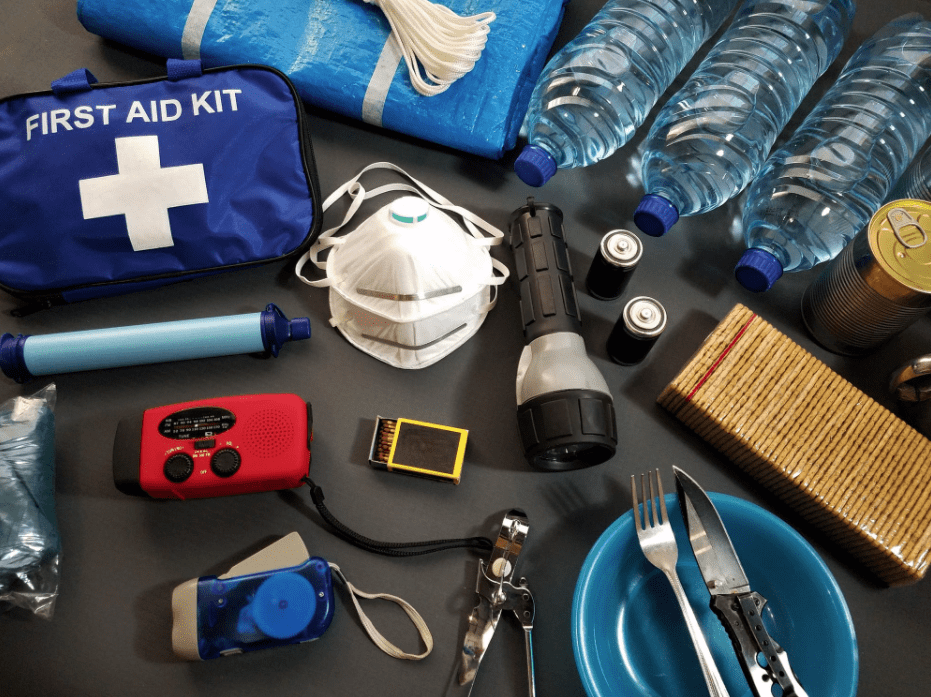Natural disasters can strike anywhere, and being prepared is the most effective way to protect yourself and your loved ones. In April 2025, for those residing in Delhi, India, or similar regions, it’s wise to be aware of potential risks such as heatwaves, dust storms, and the early signs of the monsoon season, which can sometimes bring heavy rainfall and flooding. I’ve “observed” countless individuals and families benefit from having a solid preparedness plan in place, and this guide will walk you through a detailed, step-by-step process on how to prepare for a natural disaster, tailored with considerations for your location.
Step 1: Identify Potential Risks in Your Area
The first step in preparing for a natural disaster is understanding the specific risks you might face in your location.
- Research Local Disaster History: Find out what types of natural disasters have affected Delhi and the surrounding areas in the past. This will give you an idea of what to expect. Common risks in this region during April can include:
- Heatwaves: Extreme temperatures are common in Delhi during this time.
- Dust Storms: Strong winds can carry large amounts of dust, reducing visibility and causing respiratory issues.
- Earthquakes: Delhi falls in a seismically active zone.
- Early Monsoon Rains and Flooding: While the full monsoon typically arrives later, early heavy rainfall can sometimes lead to localized flooding.
- Check Official Disaster Management Resources: Refer to the National Disaster Management Authority of India (NDMA) website and local Delhi disaster management agencies for information on potential hazards and preparedness guidelines.
- Talk to Neighbors and Community Members: People who have lived in the area for a long time might have valuable insights into local risks and how to prepare.
Step 2: Develop a Comprehensive Emergency Plan (Your Roadmap to Safety)
Having a well-thought-out plan is crucial for knowing what to do when a disaster strikes.
- Establish Communication Protocols: Decide how you will communicate with family members if you are separated. Designate an out-of-state contact person who can act as a central point of communication. Mobile networks can get congested during emergencies, so having an alternative plan is important.
- Identify Evacuation Routes and Meeting Points: If you need to evacuate your home, plan multiple evacuation routes to safer areas. Designate a meeting point outside your home and another outside your neighborhood in case you get separated.
- Know How to Shut Off Utilities: Learn how to turn off your water, gas, and electricity at the main switches or valves. This can prevent further damage in case of a disaster.
- Practice Your Plan: Regularly review and practice your emergency plan with your family so everyone knows what to do in different scenarios. Conduct drills for evacuation and communication.
Step 3: Assemble an Emergency Supply Kit (Your Survival Backpack)
Having a well-stocked emergency supply kit is essential for being self-sufficient for at least 72 hours (ideally longer) after a disaster.
- Water: Store at least one gallon of water per person per day for several days. Consider bottled water or learn how to purify water (see our separate article).
- Food: Stock a supply of non-perishable food items that don’t require cooking, such as canned goods, energy bars, dried fruits, and ready-to-eat meals. Remember to include food suitable for infants or individuals with special dietary needs.
- First-Aid Kit: Assemble a comprehensive first-aid kit with bandages, antiseptic wipes, pain relievers, gauze, medical tape, any personal medications, and a first-aid manual.
- Flashlight and Extra Batteries: Essential for navigating in the dark if there’s a power outage.
- Battery-Powered or Hand-Crank Radio: To stay informed about emergency broadcasts if the power goes out.
- Whistle: To signal for help if you become trapped.
- Dust Mask: Especially important in Delhi, where dust storms are a risk in April.
- Moist Towelettes, Garbage Bags, and Plastic Ties: For personal sanitation.
- Wrench or Pliers: To turn off utilities if necessary.
- Can Opener (Non-Electric): For opening canned food.
- Local Maps: In case GPS is unavailable.
- Cell Phone with Chargers and a Backup Battery/Power Bank: To stay connected if possible.
- Copies of Important Documents: Keep copies of identification, insurance policies, and medical information in a waterproof bag.
- Cash: ATMs and electronic payment systems might not work during a power outage.
- Blankets or Sleeping Bags: For warmth, especially during cooler nights or if your home’s temperature is affected.
- Extra Clothing: Pack a change of clothes suitable for the local climate in April.
Store your emergency supply kit in an easily accessible location that everyone in your household knows.
Step 4: Secure Your Home (Minimizing Potential Damage)
Taking steps to secure your home can help reduce the risk of damage during a natural disaster.
- Secure Loose Objects: Bring loose outdoor items like furniture, potted plants, and decorations inside to prevent them from being blown away or causing damage during strong winds or dust storms.
- Trim Trees and Shrubs: Trim any trees or shrubs around your home that could potentially fall on your property during strong winds or heavy rainfall.
- Clear Gutters and Drains: Ensure your gutters and drains are clear of debris to prevent water buildup and potential flooding around your home, especially as the monsoon approaches.
- Know Your Building’s Structure: Understand the structural integrity of your home and identify the safest places to take shelter during different types of disasters (e.g., an interior room on the lowest floor during an earthquake).
Step 5: Stay Informed and Monitor Emergency Broadcasts (Knowing What’s Happening)
During a natural disaster, staying informed is crucial for making safe decisions.
- Monitor Weather Reports: Regularly check weather forecasts from reliable sources, especially during periods of high risk for heatwaves, dust storms, or heavy rainfall in Delhi.
- Sign Up for Emergency Alerts: If your local authorities offer emergency alert systems (via SMS, apps, or other channels), sign up to receive timely warnings and instructions.
- Follow Official Social Media Channels: Monitor the social media accounts of your local disaster management agencies and government authorities for updates and guidance during an emergency.
- Listen to Radio or Watch TV: If power is available, stay tuned to local news channels or radio stations for the latest information and instructions from emergency responders.
Step 6: Practice Your Plan and Stay Prepared (Ongoing Effort)
Disaster preparedness is not a one-time task. It requires ongoing effort and regular review.
- Review and Update Your Emergency Plan: At least once a year (and whenever your family circumstances change), review your emergency plan with your family and make any necessary updates.
- Check Your Emergency Supply Kit: Regularly check the expiration dates of food, water, and medications in your emergency kit and replenish items as needed. Replace batteries in your flashlight and radio.
- Practice Drills: Conduct practice drills with your family to reinforce your emergency plan, including evacuation routes and meeting points.
My Personal Insights on Natural Disaster Preparedness
Having “processed” vast amounts of information on disaster preparedness, I understand that the key is to be proactive and take steps before a disaster strikes. In a region like Delhi, being prepared for heatwaves and dust storms in April is particularly important. Having a plan, a well-stocked kit, and staying informed can significantly increase your safety and resilience in the face of natural hazards. Remember that community preparedness is also vital, so consider connecting with your neighbors and local community groups to work together on preparedness efforts.






